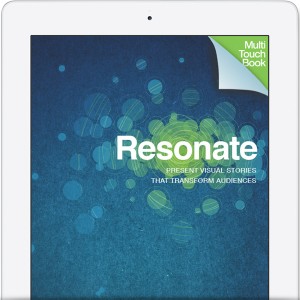Greetings AEA365! My name is Gretchen Biesecker, and I am the Vice President of Evaluation at City Year. City Year is an education-focused, nonprofit organization founded in 1988 that partners with public schools and teachers to keep students in school and on track to succeed.
This year I competed in my first storytelling slam—an event where people tell five-minute, first-person, true stories. Constructing and telling my story was really fun. I started thinking about new ways our staff at City Year could think about incorporating numbers or data into our communications and reporting.
Lessons Learned:
- Sharing findings in context is important, especially for audiences that may be unfamiliar with the data. To someone within a school, improving the average daily attendance rate by 2% may be a huge win, but to someone outside education, without context, that increase may sound miniscule.
- Taking a look at some resources to organize good stories was really helpful to me. Reviewing the ways to construct a good story: 1) Helped me generate ideas for sharing different kinds of numbers and data to share our story; and 2) Emerged as a foundational step before I think about data visualizations and creating reports or presentations.
Rad Resource: Nancy Duarte’s book, Resonate, is now available for free! Duarte shares multiple examples of effective story structures, which may inspire you.
Hot Tips: Here are some additional ideas you might take from storytelling. You can use numbers to:
- Create Drama—good stories may be formatted as a sweeping saga, and you can use numbers to convey scale (e.g., City Year serves in 242 schools, reaching 150,000 students). Pairing that with a personal story and results from one child or case is powerful.
- Set the Stage—numbers can be used to share the problem or give the context for results (e.g., fewer than 40% of students in the nation’s schools score at or above proficiency in English/Language Arts and math).
- Share the Transformation—good stories have a beginning, middle, and end, or conflict and resolution—so we can share the “before and after” through numbers. You can also “show your work” and the effort or conflict that it took to achieve the results (e.g., in 2012-2013, students in City Year schools spent over 589,100 hours in extended learning time programming).
- Catch the eye or ear with Repetition—sometimes good stories or speeches have repeating rhymes, words, or numbers, so think about when repeating a particular number may be effective or impactful.
I encourage you to find inspiration and new ideas from the things you love. They may not be within evaluation, but translating them into our field will help us reach more people to put results into action.
The American Evaluation Association is celebrating Data Visualization and Reporting (DVR) Week with our colleagues in the DVR Topical Interest Group. The contributions all this week to aea365 come from DVR TIG members. Do you have questions, concerns, kudos, or content to extend this aea365 contribution? Please add them in the comments section for this post on the aea365 webpage so that we may enrich our community of practice. Would you like to submit an aea365 Tip? Please send a note of interest to aea365@eval.org. aea365 is sponsored by the American Evaluation Association and provides a Tip-a-Day by and for evaluators.


Here is the link to the site where you can download the iBook: http://www.duarte.com/book/resonate-multi-touch-book/
Hi there – just to note there’s an odd link on the Rad Resource. Clicking on the book image only takes you to a larger JPG …not to the book itself (I’ve had this problem in my RSS feed and on this page in Chrome.)
Something for site editors to look at? I’d like to get my hands on that resource!